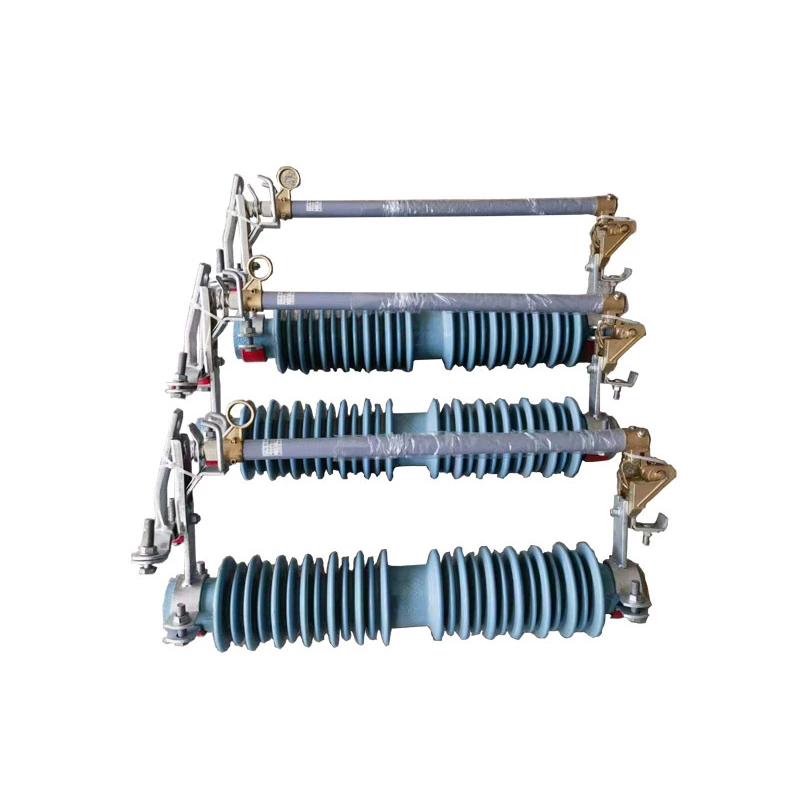Handling Of Burnout Accidents Of Drop-out Fuses And Technical Countermeasures
drop out fuse burnout is a common type of fault in the operation of distribution networks, and its handling should start from three dimensions: fault location, failure analysis, and system repair. This article proposes a systematic solution based on the burning mechanism.
1、 Typical characterization and cause tracing of burning accidents
Full melting tube carbonization
It is manifested as the overall blackening of the epoxy resin tube body, usually caused by continuous overload (>1.5Ie for more than 2 hours) or excessive selection of melt. Once the arc energy exceeds the tolerance limit of the melting tube (usually below 50kJ), the internal temperature will rise to 800-1000 ℃.
Contact welding
Welding adhesion of dynamic and static contacts is often caused by abnormal contact resistance (>500 μ Ω), and the temperature rise of the contact surface Δ T=(I ² R)/α S (α is the heat dissipation coefficient, S is the contact area). When Δ T>75K, the copper contact will undergo plastic deformation.
Explosion of arc extinguishing chamber
When the carbonation or filling density of quartz sand medium is less than 1.4g/cm ³, the arc cannot be effectively divided, and the gas pressure suddenly increases, breaking through the mechanical strength of the melting tube (ceramic tube pressure resistance>5MPa). Commonly seen in working conditions where the short-circuit current fails to break and the short-circuit current is above 20kA.
Non selective melting of molten metal
Irregular fracture marks appear on the neck of the melt, which are often caused by mechanical vibration or environmental corrosion (Cl ⁻ concentration>100ppm) leading to material fatigue, and are not directly related to current thermal effects.
2、 Burning accident handling process
Power off isolation
Use insulated operating rods to achieve simultaneous three-phase disconnection and cut off upstream and downstream power sources. When conducting electrical testing, a 10kV dedicated tester should be used, and a safety distance of no less than 0.7m should be maintained.
12kV300A drop out fuse - EnbiMai
Fault location
The infrared thermal imager scans adjacent devices to identify hotspots.
The circuit resistance tester measures the conductivity of the grounding grid (if the resistance value is greater than 0.5 Ω, it needs to be treated)
Ultrasonic flaw detector for detecting structural damage inside the melting tube
Specification for Replacement of Melting Tube
Remove ablative residue: Use 240 grit diamond sandpaper to polish the contact base, with a roughness controlled at Ra3.2 μ m.
When installing new melting pipes, the torque requirement for M12 bolts is to apply a pre tightening force of 25-30N · m to ensure uniform pressure.
The filling requirements for arc extinguishing medium are as follows: quartz sand should be sieved through 200 mesh, with a filling density of 1.6 ± 0.1g/cm ³.
System recovery verification
Conduct 3 no-load opening and closing tests, and the mechanical characteristics must meet the following requirements:
Opening speed>1.2m/s
Closing asynchrony < 2ms
Loop resistance < 200 μ Ω

